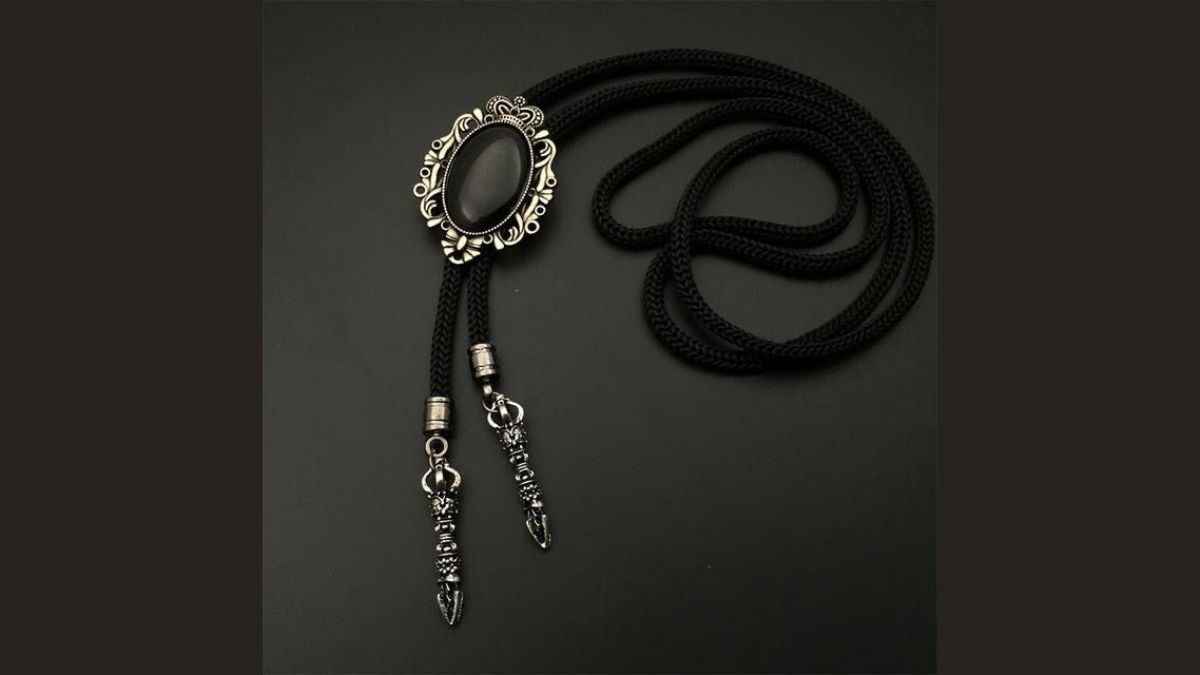The bolo tie—a distinctive piece of jewelry with deep roots in Southwestern and Native American culture—has long been a symbol of rugged individualism, heritage, and effortless style. Traditionally worn by cowboys, ranchers, and Western enthusiasts, the bolo tie has evolved from a regional accessory into a globally recognized fashion statement. But as its popularity grows, so do the practical concerns of everyday wear—especially in hot, humid climates or during active outdoor pursuits. Enter sweat resistant bolo ties, a modern innovation designed to preserve both appearance and comfort without sacrificing the classic charm of this iconic accessory.
Whether you’re attending a summer wedding in Arizona, working outdoors in Texas, or simply navigating a humid city summer, a standard bolo tie can quickly become uncomfortable or even damaged by perspiration. Moisture can tarnish metal components, warp leather cords, and leave unsightly stains. That’s where sweat resistant bolo ties come in. Engineered with moisture-wicking materials, protective coatings, and thoughtful design, these bolo ties offer durability, hygiene, and lasting aesthetics—even under the most demanding conditions.
In this comprehensive guide, we’ll explore what makes a bolo tie sweat resistant, the best materials to look for, how to care for your accessory, and why investing in a high-quality sweat resistant bolo tie is a smart choice for both fashion and function. By the end, you’ll understand exactly why sweat resistant bolo ties are becoming the go-to option for style-conscious individuals who refuse to compromise on comfort.
What Is a Bolo Tie?
Before diving into the specifics of sweat resistance, it’s important to understand what a bolo tie actually is. Often mistaken for a necklace or a lariat-style tie, the bolo tie (sometimes spelled “bola tie”) consists of three main components:
- The Cord: Typically made of leather, braided fabric, or synthetic materials, this forms the body of the tie and wraps around the neck.
- The Tips (Aguilas): Metal or decorative ends that cap the cord, preventing fraying and adding visual flair.
- The Slide (Clasp): A decorative centerpiece that holds the cord in place and allows for adjustable length. Slides can be crafted from silver, turquoise, wood, stone, or even modern metals like stainless steel.
Originating in the American Southwest in the late 19th century—though some historians trace its roots to Native American or even Argentine gaucho traditions—the bolo tie gained official recognition as Arizona’s state neckwear in 1971. Today, it’s worn by musicians, politicians, fashion designers, and everyday folks who appreciate its bold, unstructured elegance.
However, traditional bolo ties weren’t designed with sweat in mind. Natural leather absorbs moisture easily, and untreated metals can corrode when exposed to salt and acids in perspiration. This is where modern adaptations shine.
Why Sweat Resistance Matters
Sweat may seem like a minor nuisance, but it can wreak havoc on jewelry and accessories. Human perspiration contains water, salts, urea, and fatty acids—all of which can degrade materials over time. For bolo ties, the consequences include:
- Leather Deterioration: Untreated leather can stiffen, crack, or develop odors when repeatedly exposed to sweat.
- Metal Tarnishing: Silver, brass, and copper slides or tips may oxidize, turning dull or greenish.
- Staining: Sweat can leave yellowish or dark marks on light-colored cords.
- Hygiene Issues: Moist environments encourage bacterial growth, leading to unpleasant smells.
For anyone living in a hot climate, engaging in physical activity, or simply prone to perspiration, these issues are more than cosmetic—they affect wearability and longevity. That’s why sweat resistant bolo ties have emerged as a practical solution. By integrating moisture-resistant technologies and materials, these bolo ties maintain their integrity and appearance even during long, sweaty days.
Moreover, sweat resistance isn’t just about durability—it’s about confidence. Knowing your bolo tie won’t warp, stain, or smell allows you to wear it proudly in any setting, from rodeos to rooftop parties.
Key Features of Sweat Resistant Bolo Ties
Not all bolo ties labeled as “sweat resistant” are created equal. True sweat resistance comes from a combination of material selection, protective treatments, and smart design. Here’s what to look for:
1. Synthetic or Treated Cords
While traditional bolo ties use rawhide or natural leather, sweat resistant versions often feature:
- Waxed Leather: Leather treated with natural or synthetic waxes creates a moisture-repellent barrier.
- Nylon or Polyester Cords: These synthetic fibers resist water absorption and dry quickly.
- Silicone-Coated Cords: A thin silicone layer adds a waterproof shield without compromising flexibility.
These materials prevent sweat from soaking into the cord, reducing the risk of odor, warping, and staining.
2. Corrosion-Resistant Metals
The slide and tips are vulnerable to tarnish. Sweat resistant bolo ties typically use:
- Stainless Steel: Highly resistant to rust and corrosion, even when exposed to salt and acids.
- Titanium: Lightweight, hypoallergenic, and virtually impervious to sweat damage.
- Anodized Aluminum: Treated to form a protective oxide layer that resists corrosion.
- Plated Metals with Protective Coatings: Some designers use silver or brass but apply clear lacquers or PVD (Physical Vapor Deposition) coatings to seal the surface.
These choices ensure your bolo tie stays shiny and intact, even after repeated exposure to perspiration.
3. Sealed or Non-Porous Slides
Slides made from porous materials like untreated wood or certain stones can absorb sweat. Sweat resistant models often feature:
- Resin or Epoxy-Sealed Slides: A clear sealant locks out moisture.
- Glass, Ceramic, or Enamel Slides: Non-porous and easy to wipe clean.
- Metal Slides with Smooth Finishes: Fewer crevices mean less sweat accumulation.
4. Ergonomic and Breathable Design
Some modern sweat resistant bolo ties incorporate design elements that minimize direct skin contact or improve airflow, such as slightly raised slides or perforated tips. While subtle, these features reduce sweat buildup at pressure points.
Together, these features create a bolo tie that not only looks great but performs well in real-world conditions.
Materials That Make the Difference
Understanding materials is key to choosing a truly sweat resistant bolo tie. Let’s break down the most common options:
Leather vs. Synthetic Cords
Natural Leather: Beautiful and traditional, but highly absorbent. Even high-quality leather will degrade with repeated sweat exposure unless specially treated.
Waxed Leather: Offers moderate sweat resistance. The wax fills the pores of the leather, slowing moisture absorption. However, the wax can wear off over time and needs occasional reapplication.
Nylon/Polyester Braided Cords: These are inherently hydrophobic—they repel water and dry quickly. They’re also lightweight and durable, making them ideal for active wear. While they lack the rustic charm of leather, modern weaves can mimic its texture convincingly.
Silicone or Rubber Cords: Less common but extremely sweat-proof. These are often used in sporty or minimalist bolo designs. They’re flexible, hypoallergenic, and wipe clean with a damp cloth.
Metal Choices for Longevity
- Sterling Silver: Prone to tarnishing from sweat unless coated. Not ideal for high-sweat scenarios.
- Stainless Steel: The gold standard for sweat resistance. It won’t rust, corrode, or discolor.
- Titanium: More expensive but offers superior lightness and corrosion resistance.
- Gold-Plated or Rhodium-Plated: These finishes can resist sweat if the plating is thick and sealed, but thin plating may wear off.
When shopping, always check product descriptions for terms like “sweat-proof finish,” “corrosion-resistant,” or “water-repellent treatment.”
How to Care for Your Sweat Resistant Bolo Tie
Even the best sweat resistant bolo ties benefit from proper care. Here’s how to extend their life:
1. Wipe Down After Use
After wearing your bolo tie—especially in hot or humid conditions—gently wipe the cord and metal parts with a soft, dry microfiber cloth. This removes surface sweat before it can cause damage.
2. Avoid Harsh Cleaners
Never use alcohol, bleach, or abrasive cleaners. For metal components, a mild soap and water solution is sufficient. For synthetic cords, a quick rinse under lukewarm water followed by air drying works well.
3. Store Properly
Keep your bolo tie in a cool, dry place. Avoid humid bathrooms or hot cars. Store it flat or loosely coiled to prevent kinks in the cord.
4. Reapply Protective Treatments (If Applicable)
If your bolo tie uses waxed leather, consider reapplying a leather conditioner or wax every few months to maintain its moisture barrier.
5. Rotate Your Collection
If you wear bolo ties frequently, owning two or three allows each one time to “rest” and fully dry between uses—reducing long-term wear.
With these simple habits, your sweat resistant bolo tie can remain pristine for years.
Styling Sweat Resistant Bolo Ties for Every Occasion
One of the best things about sweat resistant bolo ties is their versatility. Because they’re built for real-life conditions, you can wear them confidently in a wide range of settings:
Casual Daywear
Pair a minimalist stainless steel slide with a black nylon cord for a sleek, modern look that works with jeans, tees, or button-downs. The sweat resistance means you can run errands, hike, or attend outdoor markets without worry.
Formal Events
Believe it or not, bolo ties are increasingly accepted at semi-formal and even formal events—especially in the Southwest. Choose a bolo with a polished titanium slide and a dark, waxed leather cord. Its sweat resistance ensures you stay fresh during long receptions or summer galas.
Workwear and Uniforms
Ranchers, construction workers, and outdoor guides often wear bolo ties as part of their identity. A durable, sweat resistant bolo tie withstands job-site conditions while maintaining professional pride.
Music and Performance
Musicians—particularly in country, blues, and rock—love bolo ties for their stage presence. Under hot stage lights, sweat resistant models prevent embarrassing tarnish or odor during long sets.
Travel
When packing light, a bolo tie adds instant style to multiple outfits. A sweat resistant version is ideal for tropical destinations or long flights where humidity and body heat can be unavoidable.
The key is choosing a design that matches your lifestyle. With sweat resistant bolo ties, you don’t have to choose between looking good and feeling comfortable.
Top Brands and Where to Buy
Several artisans and brands specialize in high-quality, sweat resistant bolo ties. While many traditional makers focus on aesthetics, a growing number prioritize performance:
- Southwest Silver Gallery: Offers bolo ties with stainless steel components and sealed leather cords.
- BoloBros: Known for modern designs using titanium slides and synthetic cords—explicitly marketed as sweat and water resistant.
- Native American Artisans (via certified marketplaces): Some contemporary Native jewelers now incorporate protective coatings while honoring traditional motifs.
- Etsy Crafters: Independent makers often list “sweat-resistant” or “outdoor-ready” bolo ties with detailed material descriptions.
When purchasing online, read reviews carefully and look for keywords like “tarnish-proof,” “water-repellent,” or “ideal for hot climates.” Reputable sellers will specify which parts of the bolo tie are treated for sweat resistance.
Avoid mass-produced, ultra-cheap bolo ties from unknown brands—these often use low-grade metals and untreated leather that won’t hold up.
The Future of Bolo Ties: Innovation Meets Tradition
As fashion becomes more functional, the demand for accessories that perform as well as they look continues to rise. Sweat resistant bolo ties represent a natural evolution of a timeless piece—one that respects its cultural roots while embracing modern needs.
Future innovations may include:
- Antimicrobial Coatings: To prevent odor-causing bacteria.
- Smart Materials: Cords that change color with temperature or moisture levels.
- Eco-Friendly Sweat Resistance: Plant-based waxes or biodegradable synthetics that offer protection without environmental harm.
Already, the market is shifting. More consumers are asking not just “Does it look good?” but “Can I wear it all day in 100°F heat?” The answer, increasingly, is yes—thanks to thoughtful design and sweat resistant engineering.
Debunking Myths About Sweat Resistant Bolo Ties
Despite their growing popularity, some misconceptions persist:
Myth 1: “Sweat resistant means waterproof.”
Not quite. Sweat resistance reduces moisture absorption and corrosion but doesn’t make the bolo tie suitable for swimming or showering.
Myth 2: “They look cheap or synthetic.”
Modern sweat resistant bolo ties can be indistinguishable from traditional ones. High-end versions use premium materials with invisible protective layers.
Myth 3: “Only for men.”
Bolo ties are unisex. Many women wear them as statement necklaces, and sweat resistant models are equally practical for all genders.
Myth 4: “They’re only for hot climates.”
Even in cooler regions, indoor heating, exercise, or stress can cause sweating. Sweat resistance adds universal value.
Understanding these truths helps buyers make informed choices without compromising on style or authenticity.
Conclusion: Why Sweat Resistant Bolo Ties Are Worth the Investment
The bolo tie is more than an accessory—it’s a symbol of heritage, rebellion, and personal expression. But like any wearable art, it must function in the real world. Sweat resistant bolo ties bridge the gap between tradition and practicality, offering durability, hygiene, and confidence in any environment.
By choosing materials that repel moisture, resist corrosion, and stand up to daily wear, these modern bolo ties ensure your style doesn’t fade—literally or figuratively—when the heat is on. Whether you’re a lifelong Western enthusiast or a newcomer drawn to the bolo’s bold aesthetic, investing in a sweat resistant version means you’ll enjoy your accessory longer, cleaner, and with greater ease.
As climate patterns shift and lifestyles become more active, functional fashion isn’t just a trend—it’s a necessity. Sweat resistant bolo ties meet that need without sacrificing an ounce of character. They honor the past while preparing for the future, proving that even the most iconic accessories can evolve.
So the next time you reach for a bolo tie, consider one built for real life. Look for quality materials, protective finishes, and trusted craftsmanship. With a sweat resistant bolo tie around your neck, you’re not just making a fashion statement—you’re making a smart, sustainable choice that stands the test of time, temperature, and sweat.
In a world that demands both style and substance, sweat resistant bolo ties deliver on both fronts. And as more people discover their benefits, it’s clear: the future of the bolo tie is not just bright—it’s dry, fresh, and ready for anything.
From desert trails to city streets, one thing is certain—sweat resistant bolo ties are here to stay.












